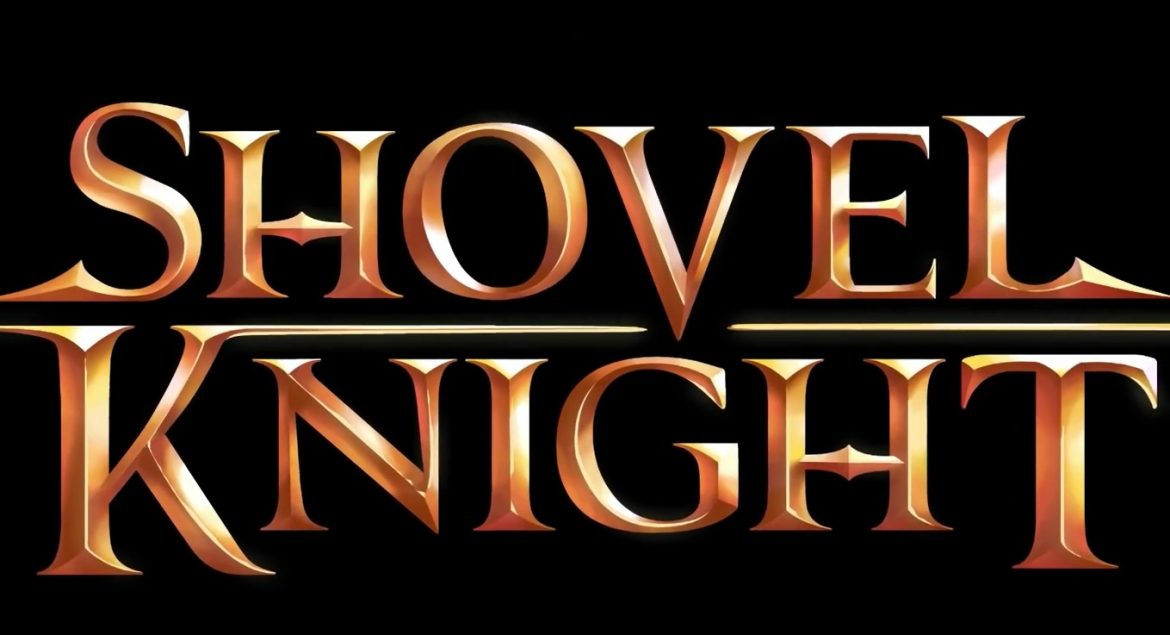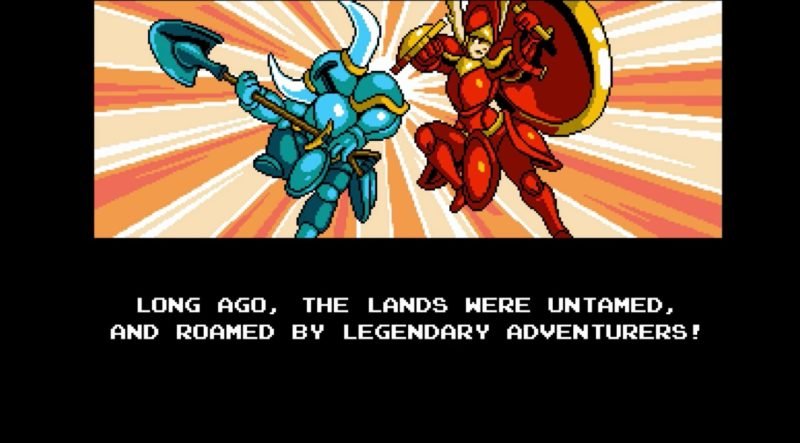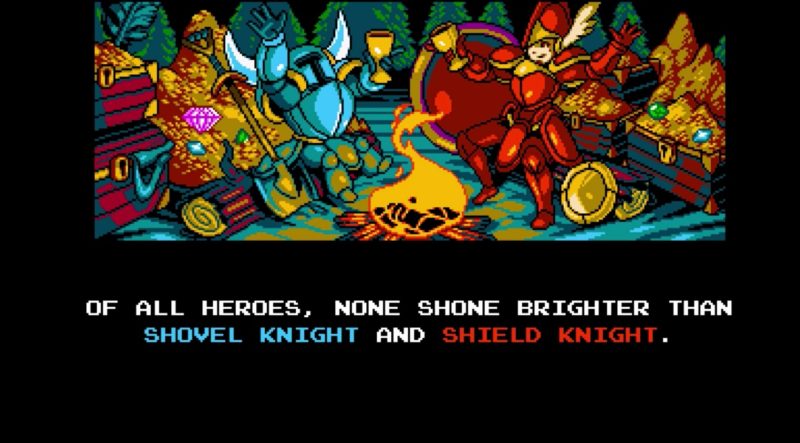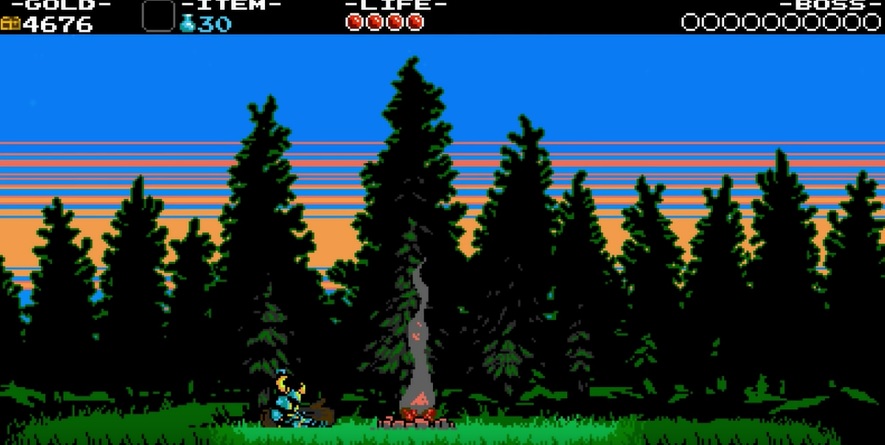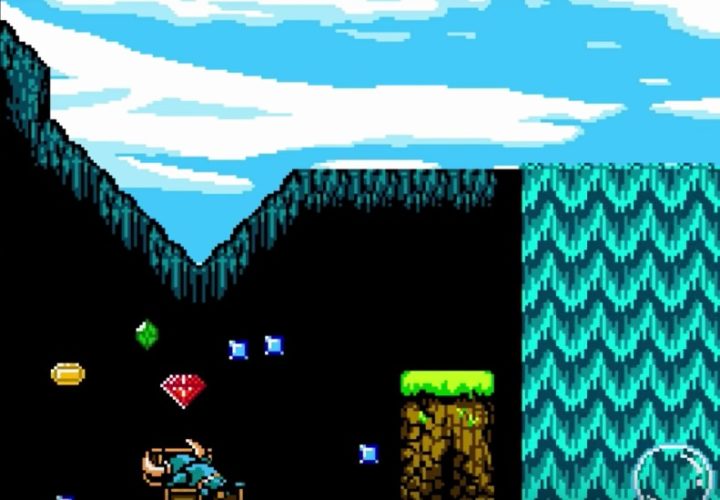TL;DR
Shovel Knight is a masterclass in retro-inspired platforming, blending mechanics from classics like Mega Man and Duck Tales into a charming, challenging adventure. You'll wield a trusty shovel, battle diverse bosses, and uncover secrets across vibrant, varied levels. While some mechanics can feel repetitive, the game's tight controls, engaging boss fights, and rewarding difficulty make it a standout. It's a heartfelt love letter to 8-bit gaming that's surprisingly deep, offering upgrades and secrets that encourage replay. Ready to dig into this gem? Read the full review to find out more!
The initial installment of Shovel Knight debuted some time ago and has since expanded with several chapters. Originally released exclusively for Nintendo’s Wii U and 3DS, the shovel-equipped knight has since found its way to numerous consoles and captivated many players. Furthermore, Shovel Knight has received a rare honor, becoming an amiibo figure, a distinction typically reserved for Nintendo’s own iconic characters.
With Shovel Knight now available in physical store editions across various formats, and the game’s continued relevance with the Plague of Shadows expansion, a review is timely, even if the core game is not entirely new. Fortunately, this is of little consequence. A game rooted in the eight-bit adventures of the 80s retains its timeless appeal, regardless of a slight delay between its original release and subsequent playthroughs.
Shovel Knight’s narrative begins with adversity. Shield Knight, his companion and sweetheart, has vanished. The protagonist retreats into seclusion, leaving the kingdom vulnerable to opportunistic forces with less than noble intentions. Shovel Knight, akin to Batman in The Dark Knight Rises, embodies a hero compelled to emerge from retirement and fulfill his duty. However, this unfolds within a pixelated fairytale realm, armed with a shovel and armor instead of batarangs and a batmobile. Lacking, of course, Michael Caine’s Alfred and his insightful counsel, as well as the presence of Catwoman, Robin, and so forth. The core concept remains.
For players familiar with classic games and their history, the influences shaping Shovel Knight are readily apparent. Elements of Mega Man are present, alongside aspects of Duck Tales, Zelda II, Castlevania, and echoes of Samus Aran’s open-world design. Yacht Club Games’ approach in Shovel Knight can be generously described as inspiration and borrowing. However, a more critical perspective might consider it a wholesale appropriation of game mechanics. Nevertheless, the streamlined execution and the reasonably original aesthetic and auditory presentation mitigate any significant concerns. The environmental variety is noteworthy, ranging from traditional castles and forests to more unconventional settings, such as the interior of a mechanical robot fish – a common sight during the Middle Ages, naturally.
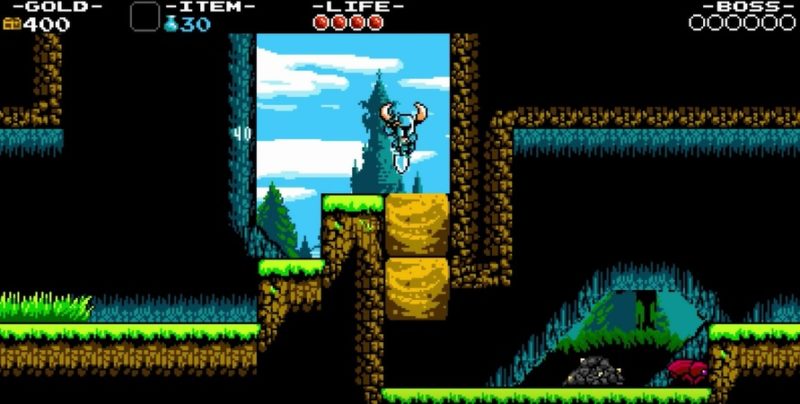
Shovel Knight’s shovel is aimed in a downward thrust and can be used in several ways, in the picture we see how he gets a couple of blocks to be crushed any minute now.
Shovel Knight traverses levels utilizing his shovel in a manner reminiscent of Scrooge McDuck in Duck Tales, with the shovel serving multiple purposes. It is a versatile tool and a suitable, albeit more whimsical, substitute for Link’s Master Sword. As the game progresses, additional abilities are unlocked, potentially necessitating a return to previous areas to discover new pathways and secrets. This concept may feel familiar to some. Moreover, Shovel Knight can unearth hidden treasures by smashing certain blocks and utilize checkpoints, represented as magical crystals. The journey is extensive and more challenging than initial appearances suggest. Expect familiar platforming tropes such as moving platforms and mini-boss encounters.
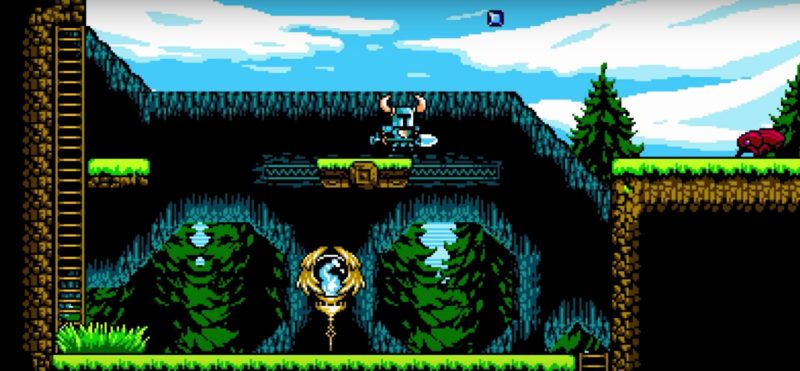
Grab more gold by destroying the crystal, or leave it whole and avoid replaying as long a bit of the level? The choice is yours!
These crystal checkpoints present a unique mechanic: skilled players can opt to destroy them for bonus jewels and gold, or preserve them intact. Destroying a crystal necessitates restarting from the last intact checkpoint, creating a risk-reward scenario. Gold is a valuable resource in Shovel Knight, used to purchase upgrades in villages accessible via the map screen. Players familiar with titles like Faxanadu, Battle of Olympus, or Zelda II (NES) will recognize the side-scrolling village environments. Upgrades include enhancements to life force and magic meters, new armor, relics (spells), and other items. Maintaining your gold supply within levels is crucial; failure results in the loss of a significant portion. To avoid replaying levels (or repetitive mini-games) to replenish lost gold, a cautious approach is advisable.
Shovel Knight occasionally suffers from tedium and monotony. Some levels are lengthy, featuring numerous checkpoints, and certain sections feel like filler. The concept of bouncing on enemies to reach elevated ladders or platforms, to access hidden areas, is overused. Similarly, Yacht Club Games frequently employs the mechanic of striking walls to uncover bonuses. The initial levels are particularly repetitive, but the creativity improves as the game progresses. In some instances, failure is almost a prerequisite for advancement, as sudden dangers and unpredictable movement patterns make it difficult to clear certain areas on the first attempt. This trial-and-error approach feels somewhat dated. The knockback effect upon enemy contact, often resulting in a fall from a cliff, is another element that could have been omitted. While irritating, it does incentivize heightened player focus.
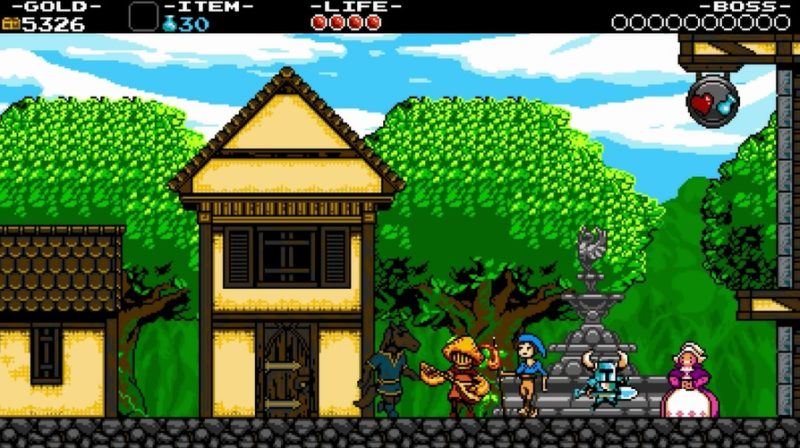
In this village you can, among other things, talk a little with a bard who is happy to receive more contributions to his repertoire. Finding all the game’s songs, some of which are scattered here and there on the tracks, is something that gives the game added value for those who want to find and complete everything.
The game’s boss encounters are a definite highlight, showcasing considerable design effort. Each boss features a substantial health pool, ensuring a challenging and satisfying battle. The various knights exhibit diverse attack patterns and adapt their tactics as their health diminishes, requiring players to remain vigilant. A fully charged magic meter can ease these duels, but analyzing attack patterns and exploiting vulnerabilities remains the most effective strategy. While perhaps not on par with Mega Man in terms of boss design, these encounters are well-crafted and engaging.
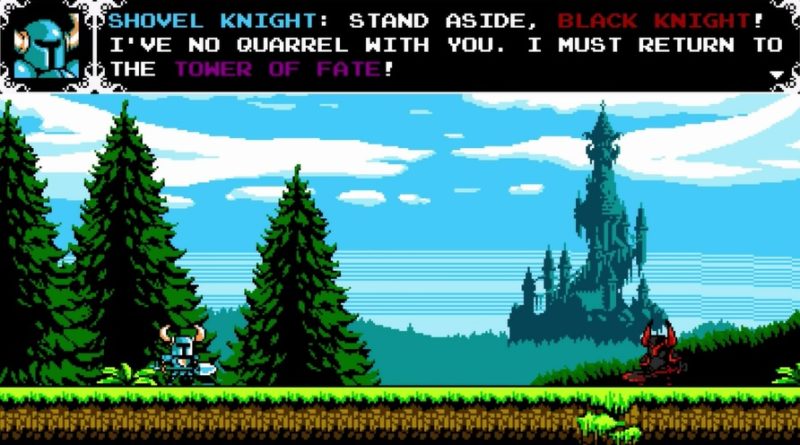
Say hello to Black Knight! The game’s first boss, and a fairly easy nut to crack but also a taste of what awaits later…
Shovel Knight, at times, feels like fan service, directly appealing to those who grew up with old-school games – titles with similar aesthetics and soundscapes that could be completed in a few hours with sufficient skill and knowledge. However, achieving that level of proficiency often required rigorous practice, intense focus, and rapid button inputs. Shovel Knight embodies this experience: short and intense, difficult yet rewarding. It also incorporates role-playing elements, side quests, and challenges that enhance replayability. The levels are generally linear, with a greater emphasis on platforming than adventure. Despite its flaws, and lacking the distinct qualities that elevate retro-inspired classics like Spelunky to greater heights, Shovel Knight remains a well-executed and entertaining game, replete with amusing details and subtle humor. In spite of some reservations, it is a worthwhile purchase, even amidst the current proliferation of retro-themed titles. Shovel Knight distinguishes itself from the crowd, standing at the forefront of the trend it helped to popularize. Its appeal is readily apparent upon playing.
Footnote: Shovel Knight is now available for a variety of formats. Our review is based on a tested version of the game for Xbox One.
